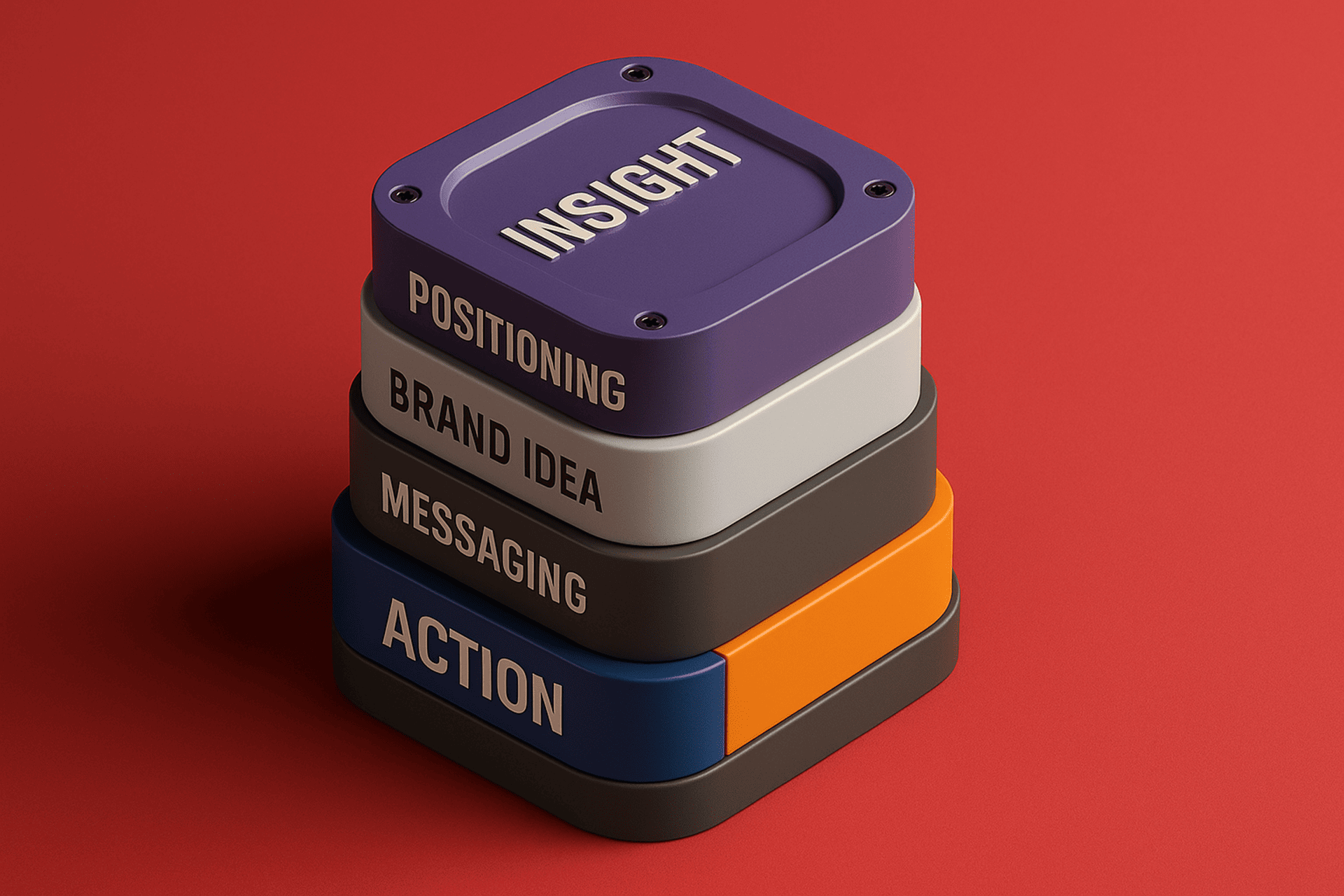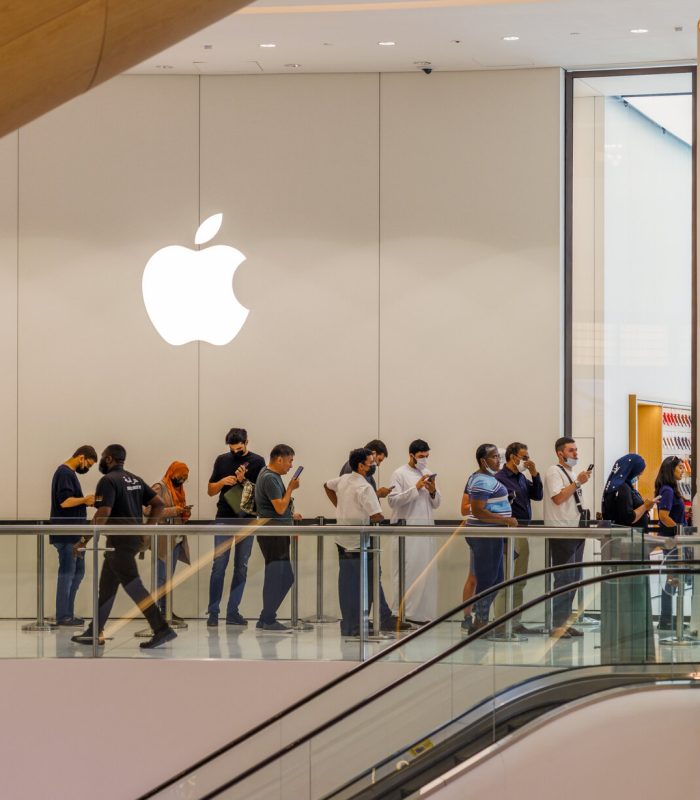In the world of brand-building, insight is often romanticized — the prized spark that unlocks campaigns, positioning, and creative breakthroughs.
But insight alone is not enough.
Insight is only powerful when it becomes actionable, and action only delivers results when it’s guided by structure.
That’s where the Strategy Stack comes in — a simple, layered framework that helps marketers move from information to transformation.
From raw observation to repeatable growth.

Why Brands Struggle to Operationalize Insight
Many brands are rich in data and observation but poor in strategic execution.
They might uncover a meaningful human truth, but fail to activate it across departments, campaigns, and decision-making.
This happens when:
- Insights are isolated to the brief, not embedded in the brand
- Strategic planning lacks internal coherence
- Messaging shifts too often across touchpoints
- Teams act without shared orientation
What’s missing isn’t talent.
It’s a stacked approach — one that connects dots across levels and disciplines.
The Strategy Stack: An Overview
Think of brand strategy not as a document, but as a living architecture — made up of 5 interconnected layers, each building on the last.
The goal is not just alignment — it’s acceleration.
When the layers work together, brands move faster, grow stronger, and operate with greater consistency.
Layer 1: Insight
This is the raw truth that makes people lean in.
It can be a tension, a contradiction, or a deep motivation.
But it must be human, emotive, and relevant to the category.
Not “Gen Z loves trends.”
But: “In a culture that values conformity, Gen Z uses micro-trends to express personal agency.”
The insight layer defines why the brand exists emotionally, not just commercially.
Layer 2: Positioning
Insight becomes power when it’s focused into a sharp position.
Positioning answers:
- Who are we for?
- What do we promise?
- How are we different from alternatives?
This is not a tagline — it’s the center of gravity for everything a brand does.
It must be precise, compelling, and built to last.
Layer 3: Brand Idea
The Brand Idea is the creative expression of the positioning.
It serves as:
- A rallying cry
- A storytelling engine
- A mental shortcut for your audience
The strongest brand ideas are not slogans.
They’re platforms — capable of living across years, channels, and product lines, while reinforcing the same central truth.
Layer 4: Messaging System
This layer brings structure to storytelling. It turns the brand idea into:
- A tone of voice
- Messaging territories
- Modular messages for different audiences and occasions
Too often, brands jump straight from “big idea” to tactical messaging — skipping this middle layer.
The result? Inconsistency, fragmentation, and diluted equity.
The messaging system ensures your brand speaks in one voice, with many expressions.
Layer 5: Action Frameworks
Finally, strategy must turn into action.
This layer defines:
- How teams brief creatives
- How success is measured
- How strategy guides product, media, service, and partnerships
Action frameworks translate strategy into daily decisions — from a social media post to a retail display, from campaign timing to internal culture.
Why the Stack Works
When these five layers work together, the result is a strategic operating system for the brand.
It allows teams to:
- Work faster, because decisions are pre-aligned
- Be more creative, because guardrails are clear
- Scale effectively, because the brand feels consistent everywhere
- Measure meaningfully, because every action ladders up to a purpose
Final Thought: Strategy Isn’t a Slide — It’s a Stack
A single line in a PowerPoint won’t build a brand.
But a layered, interconnected structure — from human truth to brand behavior — will.
The strongest brands aren’t the ones with the most ideas.
They’re the ones with the clearest structure for turning ideas into outcomes.
So the next time you’re crafting a campaign or writing a brief, ask not just what’s the insight — but where does it sit in the stack?
That’s the path from insight to impact.
From brand truth to brand power.





